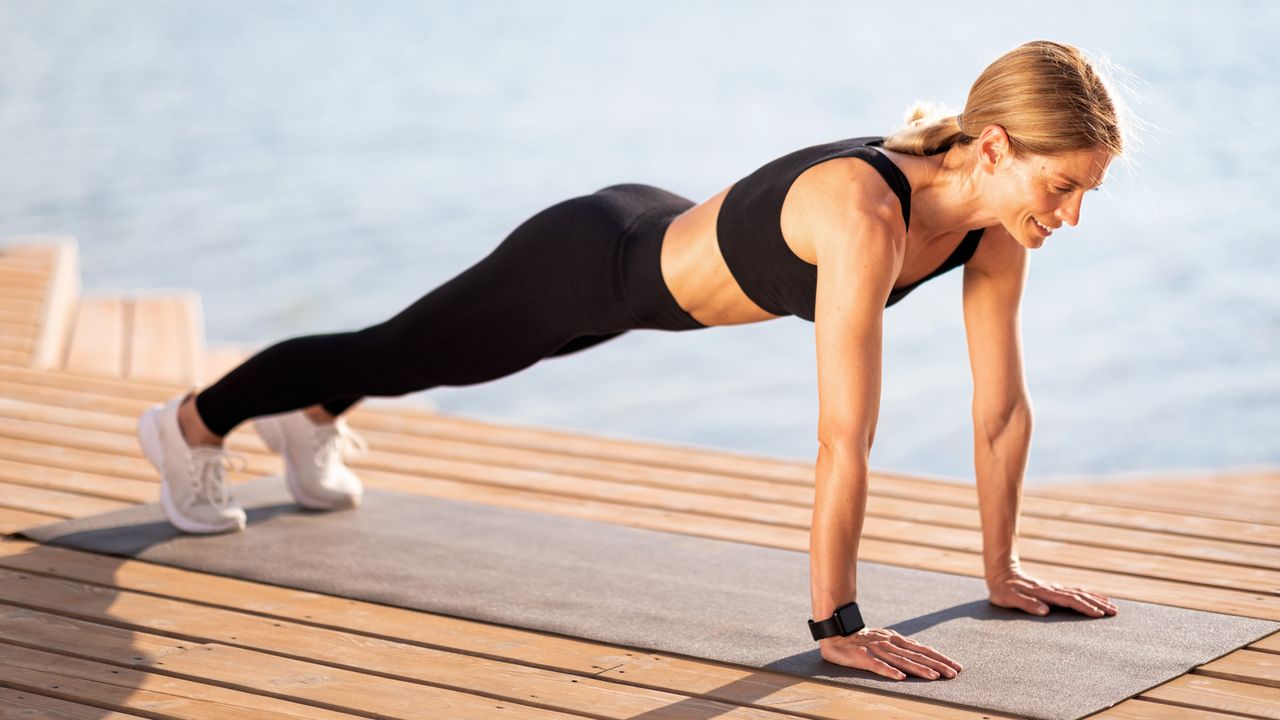Health
Discover the Gymnastics Plank: A Core Strengthening Essential

The gymnastics plank has emerged as a leading exercise for enhancing core strength and stability, according to experienced fitness professionals. This bodyweight exercise is praised for its ability to engage multiple muscle groups, including not only the core but also the shoulders, arms, wrists, quads, and glutes. As a personal trainer with years of experience in weightlifting, the effectiveness of the gymnastics plank stands out, especially for those seeking a rigorous workout without the need for heavy weights.
The gymnastics plank offers a challenging alternative that can effectively build endurance and strength. While many fitness enthusiasts believe heavy lifting is essential for a solid workout, the gymnastics plank demonstrates that bodyweight exercises can be equally effective.
How to Perform the Gymnastics Plank
To execute the gymnastics plank, begin in a high plank position. Ensure your shoulders are aligned over your hands, with your hips in line with your shoulders and a straight line from your heels to your head.
– Engage your core, glutes, and quads.
– Press through your hands to broaden your upper back while creating a slight hollow in your torso.
– Pull your belly button towards your spine.
– Shift your weight forward so your shoulders move past your fingertips.
– Maintain pressure through your hands and the tops of your feet to stabilize your hips.
Holding this position can be intense, so starting with a 20-second hold is recommended, gradually increasing the duration as strength improves. This exercise not only challenges your core but also tests your ability to maintain balance and stability.
Benefits of the Gymnastics Plank
The gymnastics plank serves as a functional exercise that enhances endurance and stability. Like traditional planks, it employs isometric contraction, where muscles remain tense without movement. This method effectively targets various muscle groups, including the shoulders, arms, forearms, wrists, core, hips, lower back, glutes, and quads.
This plank variation shifts focus to the upper body, significantly emphasizing the shoulders, arms, and wrists. By placing weight on your toes and the tops of your feet, more emphasis is placed on the front body, specifically targeting the hips and quads for a comprehensive workout.
For those experiencing wrist discomfort, a forearm plank variation can provide relief while retaining the core strengthening benefits. By dropping to your elbows and following similar steps, individuals can still engage their core effectively.
While planking contributes to core strength, it does not directly sculpt visible abs. Core exercises strengthen key muscles, including the rectus abdominis, transverse abdominis, and obliques, but visible muscle definition requires a combination of low body fat percentage and consistent muscle development over time. Incorporating weightlifting alongside core-targeting exercises is essential for achieving a balanced and strong physique.
In summary, the gymnastics plank is a valuable addition to any workout regimen, providing a rigorous, full-body exercise that challenges the core and other major muscle groups. As fitness enthusiasts explore various training methods, this bodyweight exercise stands as a testament to the effectiveness of functional movement in achieving strength and stability.
-

 Technology5 months ago
Technology5 months agoDiscover the Top 10 Calorie Counting Apps of 2025
-

 Health2 months ago
Health2 months agoBella Hadid Shares Health Update After Treatment for Lyme Disease
-

 Health3 months ago
Health3 months agoErin Bates Shares Recovery Update Following Sepsis Complications
-

 Technology4 months ago
Technology4 months agoDiscover How to Reverse Image Search Using ChatGPT Effortlessly
-

 Technology1 month ago
Technology1 month agoDiscover 2025’s Top GPUs for Exceptional 4K Gaming Performance
-

 Technology2 months ago
Technology2 months agoElectric Moto Influencer Surronster Arrested in Tijuana
-

 Technology5 months ago
Technology5 months agoMeta Initiates $60B AI Data Center Expansion, Starting in Ohio
-

 Technology5 months ago
Technology5 months agoRecovering a Suspended TikTok Account: A Step-by-Step Guide
-

 Health4 months ago
Health4 months agoTested: Rab Firewall Mountain Jacket Survives Harsh Conditions
-

 Lifestyle5 months ago
Lifestyle5 months agoBelton Family Reunites After Daughter Survives Hill Country Floods
-

 Technology4 months ago
Technology4 months agoHarmonic Launches AI Chatbot App to Transform Mathematical Reasoning
-

 Technology3 months ago
Technology3 months agoUncovering the Top Five Most Challenging Motorcycles to Ride













